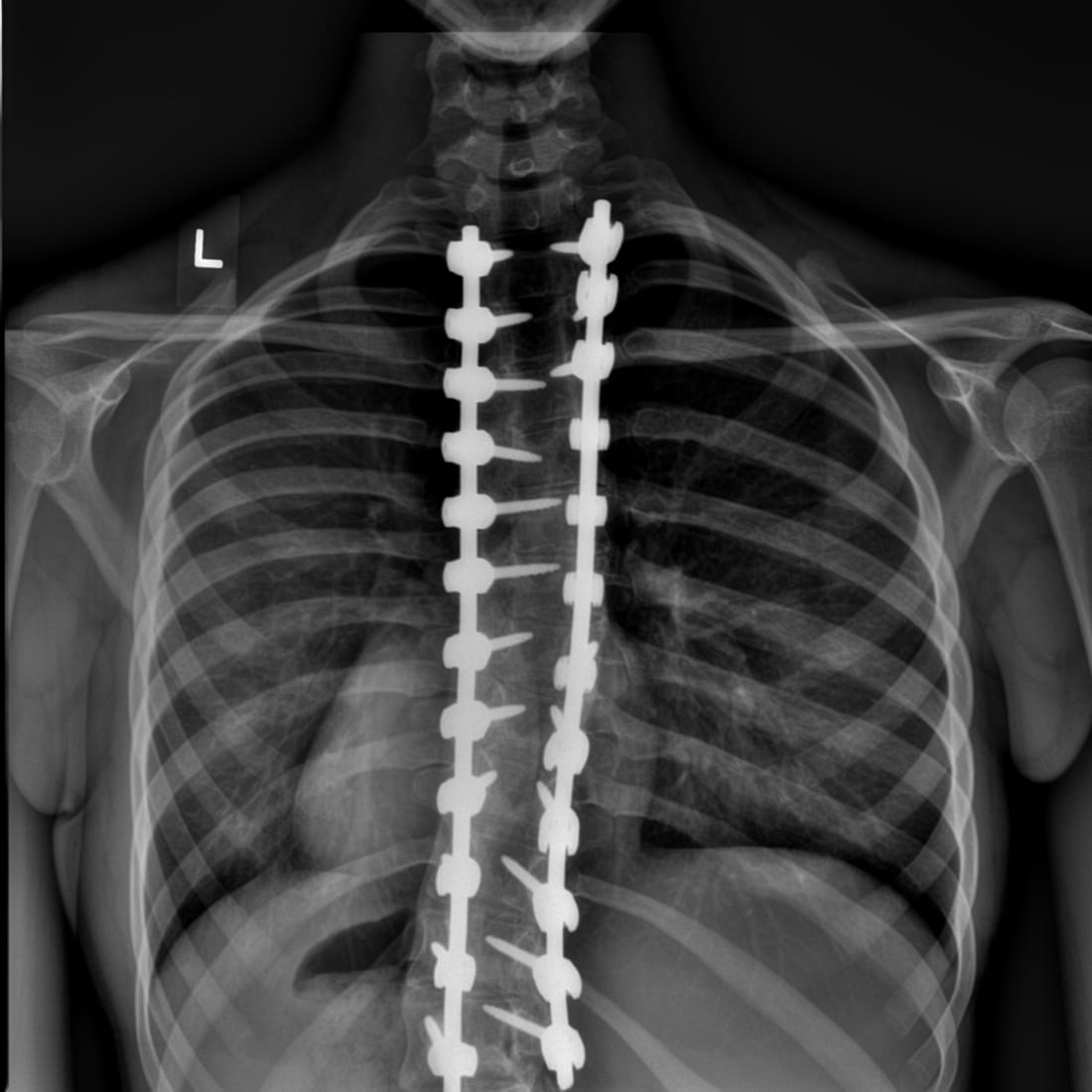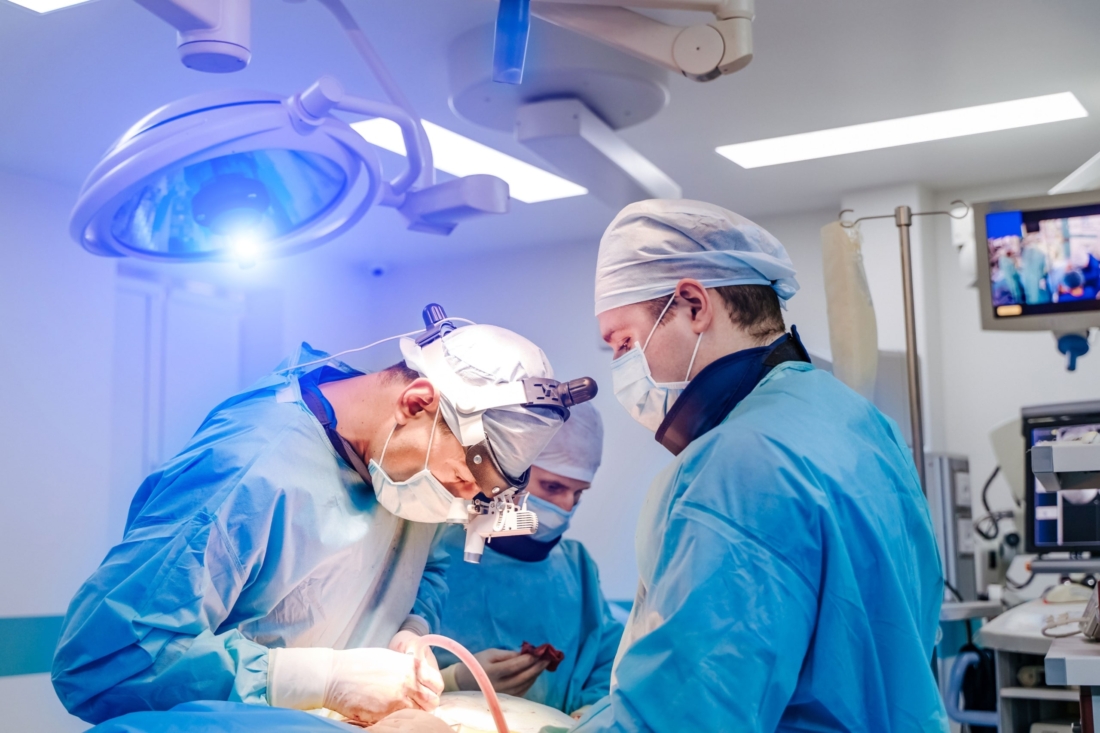Receiving a scoliosis diagnosis often brings a flood of questions and concerns about the future. How did this happen? What are the scoliosis treatment options? Is scoliosis surgery necessary? Navigating these uncertainties is crucial for making informed decisions.
Overview of Scoliosis Surgery
This article provides an overview of scoliosis surgery, including when it might be considered, what the procedure involves, and what to expect during recovery. Our goal is to equip you with the knowledge you need to understand scoliosis surgery and make confident, informed choices for your health or the health of a loved one.
When is Scoliosis Surgery Considered?
Scoliosis surgery is typically considered when the spinal curvature becomes severe and continues to progress despite non-surgical scoliosis treatments. The decision to proceed with scoliosis surgery depends on several factors, including the patient’s age, the degree and location of the curve, and the presence of symptoms such as pain or respiratory issues.
Generally, scoliosis surgery is seen as a last resort after non-surgical treatments, like custom bracing and specific exercise rehabilitation, have been exhausted. These non-surgical treatments aim to halt or slow the progression of the curve, but if they do not, surgery may become necessary to prevent further complications and improve quality of life.
What Does Scoliosis Surgery Involve?
Scoliosis surgery, primarily involving spinal fusion, aims to correct the curvature and stabilize the spine. During the procedure, the surgeon aligns the affected vertebrae and then fuses them together using bone grafts, metal rods, and screws. These components help to keep the spine straight as the bone grafts grow and solidify into a single, solid bone. The surgery typically addresses the most affected sections of the spine.
Post-operative care includes a hospital stay for monitoring and initial recovery, followed by several months of restricted activity to ensure proper healing and fusion.
Risks of Scoliosis Surgery
While scoliosis surgery can provide significant benefits, it can also come with various risks. Potential complications include infection, blood loss, and adverse reactions to anesthesia. There’s also the risk of nerve damage, which can lead to numbness, weakness, or even paralysis in rare cases. The fusion process may also mean a loss of flexibility in the treated section of the spine, which can affect overall mobility. Patients should thoroughly discuss these risks with their healthcare provider to make an informed decision.
Alternative Non-Surgical Scoliosis Treatments
While scoliosis surgery is necessary for some, many people manage their scoliosis with non-surgical treatments. These treatments generally focus on reducing pain, improving function and quality of life, and preventing progression. They can be particularly effective when scoliosis is diagnosed early. Options include:
Custom Bracing: Wearing a custom-made brace, may help stop the progression of curves, and in some cases, even reduce the curvature, especially in growing children and adolescents. Custom braces are designed and made for each individual patient.
Scoliosis Specific Exercise Rehabilitation: Physiotherapeutic scoliosis specific exercise (PSSE) programs, like ScoliBalance®, focus on teaching the patient active self-correction of the posture in a 3D manner, strengthening of the corrected posture, and integration of the new posture into their daily lives. The focus is on ensuring that the spine can maintain or improve its flexibility for function, and that muscle strength and endurance is also improved. Each patient has a tailored program according to their curve type, symptoms, and treatment goals.
These programs can be stand alone for smaller curves, but should be used as part of a comprehensive program combined with brace wear for larger curves. ScoliBalance can also empower the patient to maintain the correction achieved with bracing once the brace weaning process commences.
Each of these treatments should be tailored to the individual’s specific needs and can be used in combination to provide the most effective management of scoliosis. It is essential to work with healthcare professionals to develop a comprehensive treatment plan that is best suited to the patient’s treatment and lifestyle goals.
Our Approach at ScoliCare
At ScoliCare, our priority is your well-being. While our focus is on non-surgical treatments to treat scoliosis, we recognize that surgery, in some cases, may be in the patient’s best interest. If surgery is deemed necessary for optimal long-term health and quality of life, we will help guide you through the next steps. Your health is our foremost concern, and we are committed to recommending the most appropriate treatment for your individual needs.
Scoliosis surgery is a significant decision with long-term implications. It is essential to thoroughly understand the procedure, risks, and recovery process before making a decision. Exploring all available treatment options and being proactive in managing scoliosis can often reduce the need for surgery. Always consult with your healthcare provider to determine the best course of action for your specific condition.
If you or a loved one has been diagnosed with scoliosis and you’re considering your treatment options, don’t navigate this journey alone. Contact us today to schedule an initial consultation with our team.




